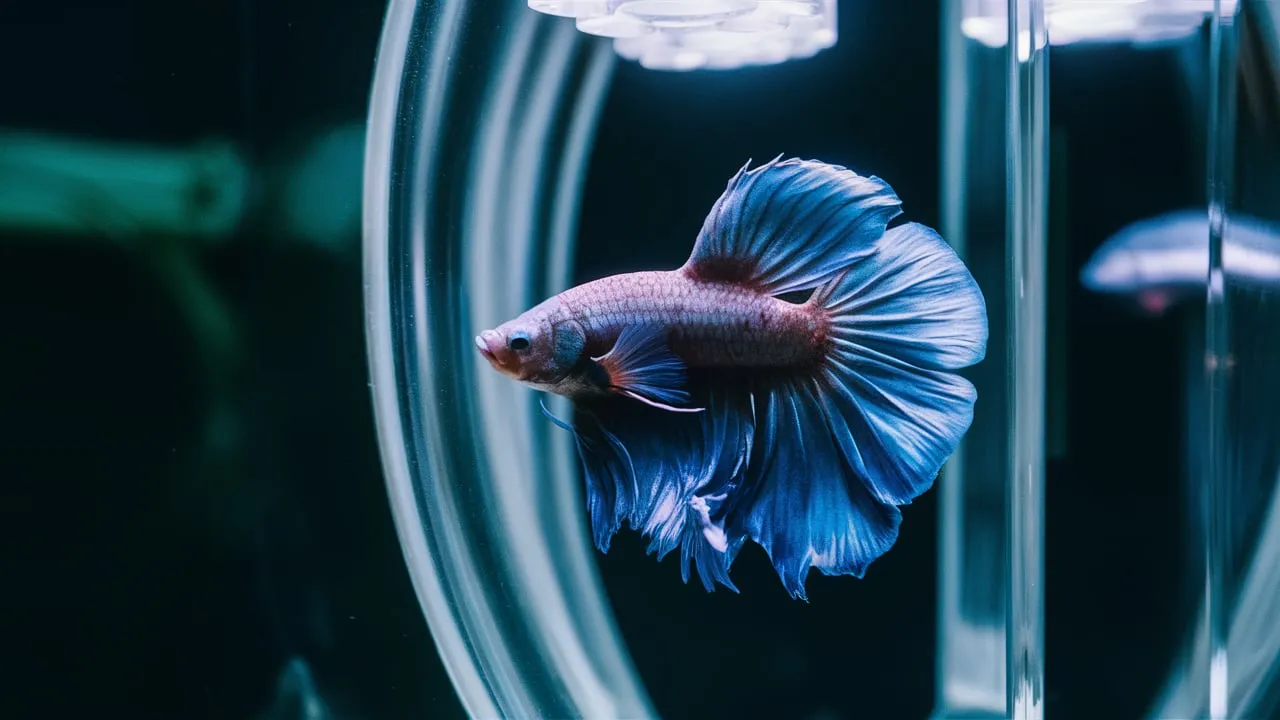Betta fish, also known as Siamese fighting fish, are one of the most popular and captivating freshwater aquarium species. These vibrant, energetic fish have captured the hearts of aquarium enthusiasts worldwide. However, many new Betta owners may not be aware of the distinct differences between male and female Betta fish. Understanding these differences is crucial for providing the best possible care and ensuring the well-being of your Betta fish. In this article Betta Fish Tips will explore male and female betta fish.
Physical Appearance
One of the most noticeable differences between male and female Betta fish is their physical appearance. Male Betta fish are typically larger and have more vibrant, flowing fins. They often display a wide range of colors, from the iconic bright red to shimmering blues, greens, and even multicolored patterns. In contrast, female Betta fish are generally smaller, with shorter, less elaborate fins and a more subdued color palette.
Dorsal Fin
The dorsal fin of a male Betta fish is typically longer and more pointed, while the female’s dorsal fin is shorter and more rounded.
Anal Fin
The anal fin of a male Betta is longer and more pointed, while the female’s anal fin is shorter and more rounded.
Ventral Fins
Male Betta fish have longer, more prominent ventral fins, while the female’s ventral fins are shorter and less pronounced.
Body Shape
Male Betta fish often have a more slender, streamlined body, while females tend to have a slightly rounder, more robust build.
Behavioral Differences
In addition to physical differences, male and female Betta fish also exhibit distinct behavioral patterns.
Aggression
Male Betta fish are notorious for their aggressive behavior, particularly towards other male Bettas. They will often flare their fins and engage in territorial displays or even physical fights to establish dominance. Females, on the other hand, are generally less aggressive and can be kept in small groups or sororities.
Breeding
When it comes to breeding, the male Betta fish takes on a more active role. He will build a bubble nest, a floating structure made of air bubbles, to attract a female. The female Betta will then lay her eggs, which the male will fertilize and protect until they hatch.

Caring for Male and Female Betta Fish
The care requirements for male and female Betta fish are largely similar, but there are a few key considerations to keep in mind.
Tank Size
Male Betta fish generally require a larger tank, as their aggressive nature and territorial behavior necessitates more space. Females can be kept in smaller aquariums or even in a tank with other community fish.
Tank Mates
While male Betta fish should be housed individually, females can be kept in small groups or sororities, provided the tank is large enough and there are plenty of hiding places.
Breeding
If you plan to breed Betta fish, it’s important to have a separate breeding tank and to carefully monitor the breeding process to ensure the safety of both the male and female fish.
What Common Health Issues Do Betta Fish Face?
Betta fish, also known as Siamese fighting fish, are a popular choice for aquarium hobbyists. However, they can face several common health issues that owners should be aware of:
- Fin Rot: This is a bacterial infection that can cause the fish’s fins to become discolored, frayed, and eventually rot away. It is often caused by poor water quality or overcrowding.
- Ammonia/Nitrite Poisoning: Bettas are sensitive to high levels of ammonia and nitrites in the water, which can be toxic and cause health problems if the aquarium is not properly cycled and maintained.
- Ich (Ichthyophthirius Multifiliis): This is a common parasitic infection that causes white spots to appear on the fish’s body and fins. If left untreated, it can be fatal.
- Swim Bladder Disorder: This condition can cause the fish to have trouble swimming or floating upright, and is often related to diet, water quality, or physical deformities.
- Stress: Bettas are territorial and can become stressed by factors such as overcrowding, sudden changes in water parameters, or exposure to strong water currents. Stress can weaken the fish’s immune system and make them more susceptible to other health issues.
To maintain the health of Betta fish, it is important to provide a clean, well-cycled aquarium with stable water parameters, a proper diet, and minimal stress. Regular water changes, water quality testing, and disease prevention measures can help keep Bettas healthy and thriving.
Conclusion
By understanding the physical and behavioral differences between male and female Betta fish, you can provide your Betta with the best possible care and ensure their long-term health and happiness. Whether you choose a vibrant male or a more subdued female, Betta fish make for captivating and rewarding aquarium companions.

Bài viết liên quan
How Old Do Betta Fish Live?
Betta fish, also known as Siamese fighting fish, are a popular choice for aquarium enthusiasts [...]
Jul
How To Remove Fish Tank Smell
Maintaining a healthy and odor-free fish tank can be a challenge, especially for those new [...]
Jul
How Long Can A Betta Fish Live Without A Filter?
As a responsible betta fish owner, ensuring your pet’s wellbeing is of utmost importance. One [...]
Jul